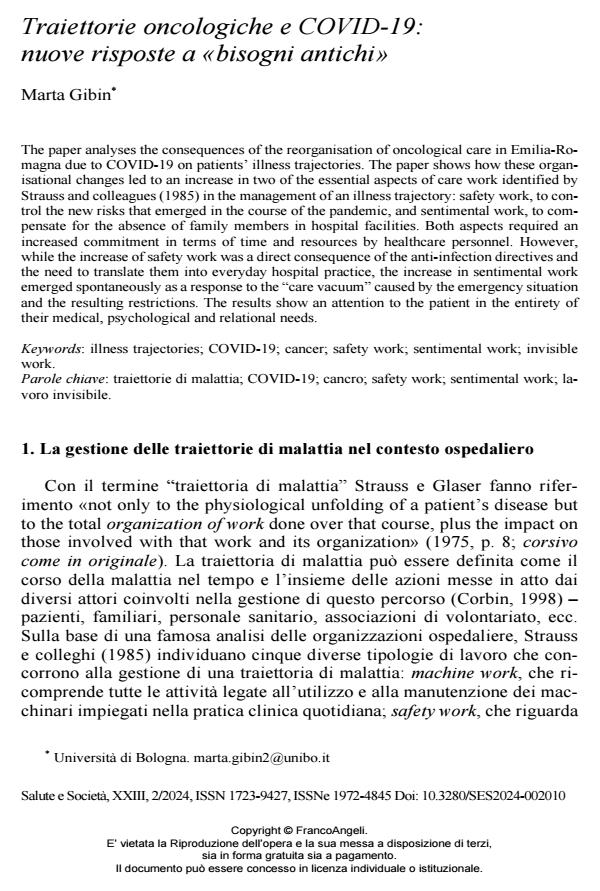Traiettorie oncologiche e COVID-19: nuove risposte a «bisogni antichi»
Titolo Rivista SALUTE E SOCIETÀ
Autori/Curatori Marta Gibin
Anno di pubblicazione 2024 Fascicolo 2024/2
Lingua Italiano Numero pagine 15 P. 149-163 Dimensione file 200 KB
DOI 10.3280/SES2024-002010
Il DOI è il codice a barre della proprietà intellettuale: per saperne di più
clicca qui
Qui sotto puoi vedere in anteprima la prima pagina di questo articolo.
Se questo articolo ti interessa, lo puoi acquistare (e scaricare in formato pdf) seguendo le facili indicazioni per acquistare il download credit. Acquista Download Credits per scaricare questo Articolo in formato PDF

FrancoAngeli è membro della Publishers International Linking Association, Inc (PILA)associazione indipendente e non profit per facilitare (attraverso i servizi tecnologici implementati da CrossRef.org) l’accesso degli studiosi ai contenuti digitali nelle pubblicazioni professionali e scientifiche
The paper analyses the consequences of the reorganisation of oncological care in Emilia-Romagna due to COVID-19 on patients’ illness trajectories. The paper shows how these or-ganisational changes led to an increase in two of the essential aspects of care work identified by Strauss and colleagues (1985) in the management of an illness trajectory: safety work, to control the new risks that emerged in the course of the pandemic, and sentimental work, to compensate for the absence of family members in hospital facilities. Both aspects required an increased commitment in terms of time and resources by healthcare personnel. However, while the increase of safety work was a direct consequence of the anti-infection directives and the need to translate them into everyday hospital practice, the increase in sentimental work emerged spontaneously as a response to the “care vacuum” caused by the emergency situation and the resulting restrictions. The results show an attention to the patient in the entirety of their medical, psychological and relational needs.
Parole chiave:traiettorie di malattia; COVID-19; cancro; safety work; sentimental work; lavo-ro invisibile.
Marta Gibin, Traiettorie oncologiche e COVID-19: nuove risposte a «bisogni antichi» in "SALUTE E SOCIETÀ" 2/2024, pp 149-163, DOI: 10.3280/SES2024-002010